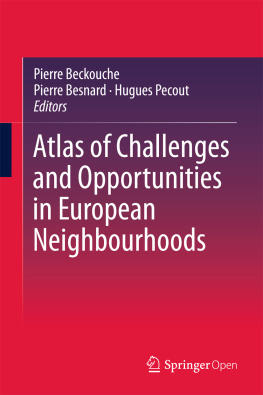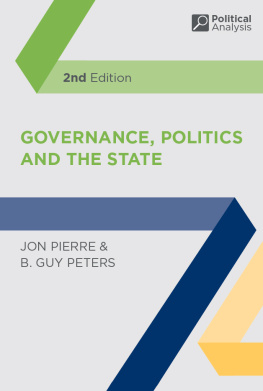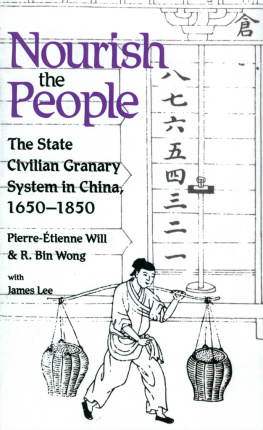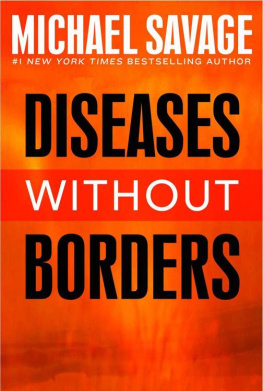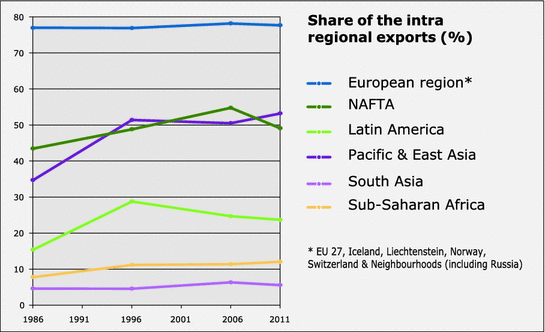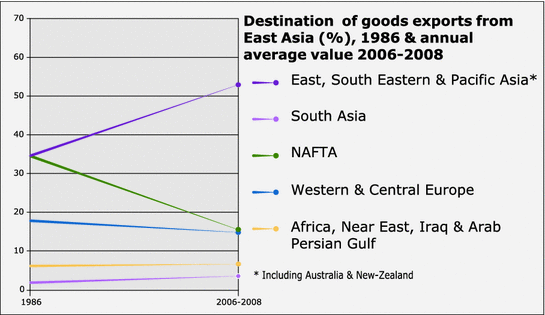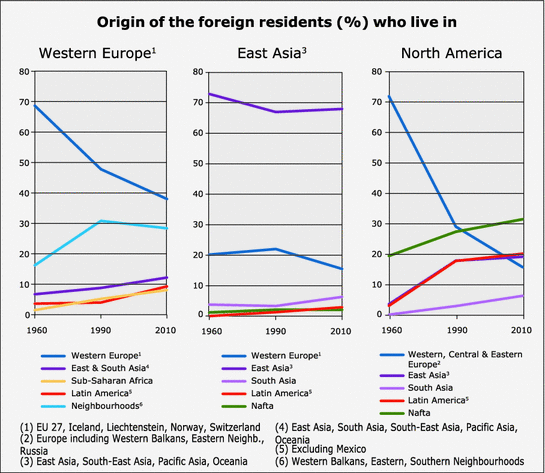1.1.1 The Dialectic Between Globalisation and Regionalisation
Three factors explain the rise of regionalisationthus the neighbourhoodissue, as a complementary major pattern, along with the globalisation pattern, of the internationalisation of human activities in the four last decades. The first factor is economic: in a knowledge economy, an increasing share of the resources are decreasingly withdrawn to other players but rather produced with other players. The bigger the interaction with players the larger the new resources. Thus, neighbouring countries can more easily turn into strategic partners for business. The neighbour gets a new status: it is decreasingly viewed as the historical military enemy and increasingly becomes the necessary economic partnersee the new East Asian policy of China, which, in the 1990s turned its regional strategy from confrontation to partnership [Beeson and Li ].
The second factor is environmental: the rise of concerns regarding the climate and natural resources has, of course, a global dimension (e.g. IPCC reports), but it also has a regional dimension because dissemination of air or water pollution spreads to neighbouring territories. The domain of the environment provides the most convincing proof that proximity has not been dissolved in globalisation. Moreover, the perspective of costlier long distance transport due to energy price increases, could promote shorter supply chains, hence growing economic interaction with neighbours.
The third factor is political: the collapse of purely national regulation since the 1980s did not give way to alternative regulation at global scale. The recent failures of global regulation in the financial area (2008 international crisis), in the environment area (2009 Copenhagen climate change conference), and in the trade area (Doha rounds successive adjournments), have exposed a need for international regulation on a regional scale, of which the European Union was a primary example.
The consequences of this rising interaction between regionalisation and globalisation are threefold:
(i)
The rise of regionalism , that is the multiplication since the mid-1990s of Regional trade agreementswhich go much further than trade since they can also deal with migration or environment. As reflected in the positions adopted by the FAO and Unctad favouring regional agreements [Mashayekhi et al. ], the regionalisation of efforts to regulate environment, food security, new North-South relations and international economic relations is more and more viewed as a positive complement to global regulation.
(ii)
The confirmation of de facto regionalisation of migratory, cultural and economic international exchanges. For decades, international trade has increased more on the scale of large international regions than on the scale of the world (Fig. ).
Fig. 1.1
The long-run trend of regional integration. The case of trade. Source: Comtrade, ESPON TIGER & ITAN projects, FP7 Eurobroadmap Project, IGEAT, OMC, P.Beckouche
Fig. 1.2
Trade: the impressive rise of the East Asia regional integration. Source: ESPON Europe in the World project, FP7 FP7 Eurobroadmap Project, IGEAT
Fig. 1.3
Despite the globalisation of routes, foreigners mostly come from the neighbourhoods. Source: IGEAT, World Bank & Bilateral Migration and Remittances, 2012
(iii)
What could be called the regionalisation of minds , that is to say the rising use of international institutions and think tanks to figure out internationalisation through the regional pattern. The World Bank works increasingly at a regional scale: East Asia and the Pacific, Latin America, Middle East and North Africa (Mena region) etc., as an example, see its book with the Islamic development bank on the Arab countries integration [CMI, WB and IDB 2012]. In 2011, the Asian development bank (ADB) published a report whose significant title is Institutions for Regional IntegrationTowards an Asian Economic Community; regional integration is one of its three strategic axes, along with inclusive and sustainable growth. Likewise, the strategy of the African development bank is now designed in a regional framework, as expressed in the AfDB Group Regional Integration Strategy; in 2012 the bank published a book very much in favour of a North African integration [Santi et al. ]. Meaningfully, a rising number of large companies choose a regionalised organisation of their world activities: Americas, Europe (more and more Europe-Middle East-Africa), East Asia
1.1.2 How the Neighbourhoods Issue Is Addressed in International Scientific Literature
Since the beginning of the 2000s, the regional issue has also been the target of a huge rise in academic publishing. Things began as early as the 1960s when the European Community came into force: the debate among economists dealt mainly with the opportunity this community represented for fulfilling the five stages of any regional integration according to the theory of Balassa []: free trade area, customs union, common market, economic and monetary union.
The main impetus for academic publishing came from the rise of Regional trade agreements (RTAs) worldwide in the 1990s and what Hettne and Soderbaum [] provide a comprehensive analysis of the regionalisation process in the six last decades. However, the territorial issue remains largely overlooked.

